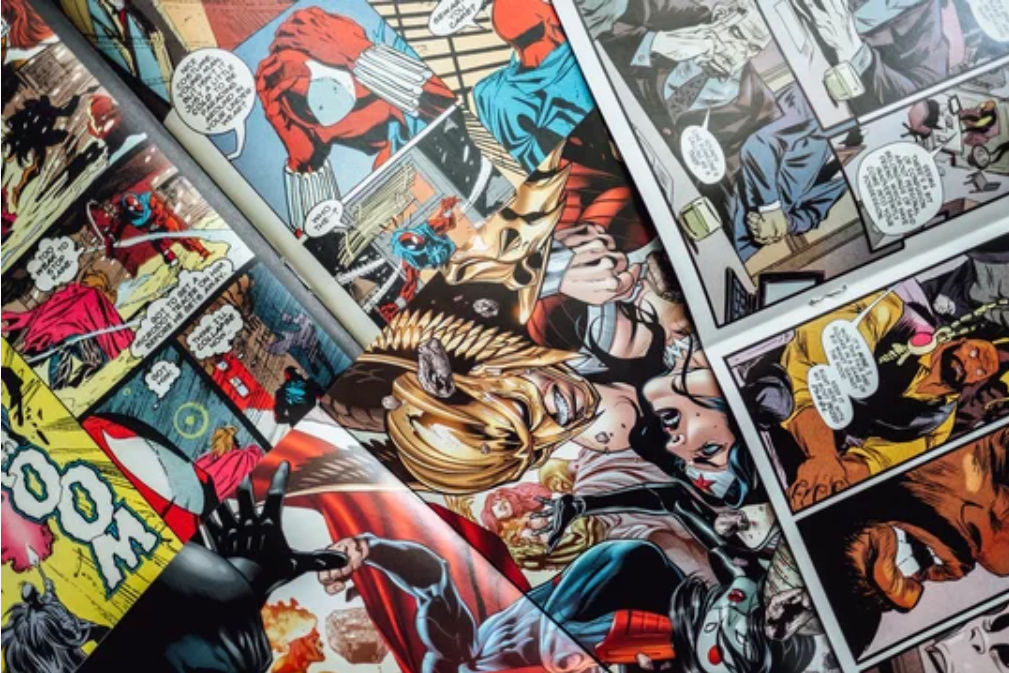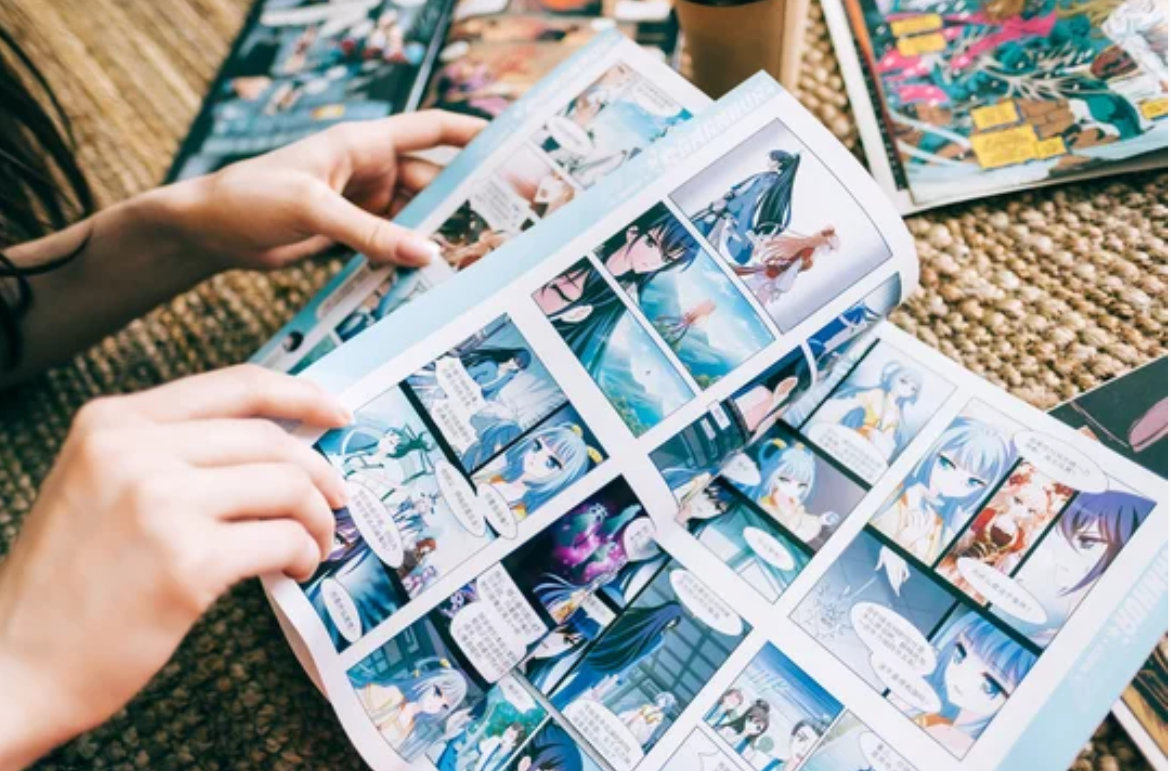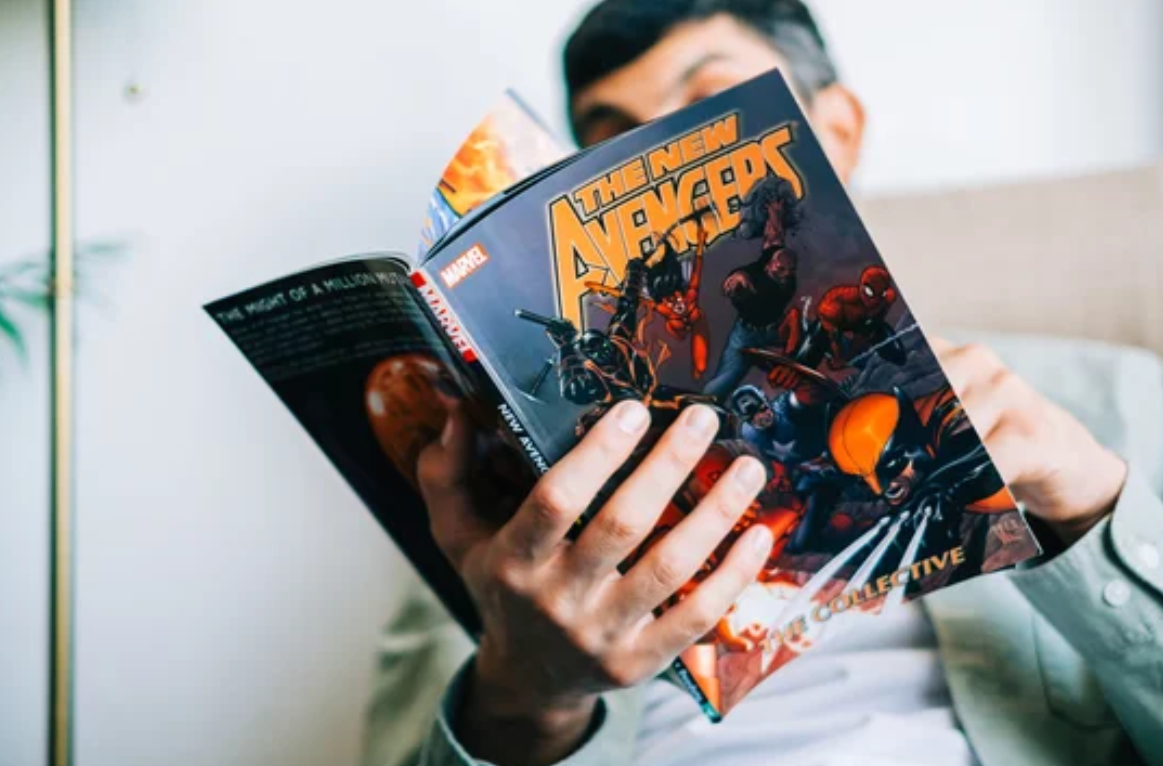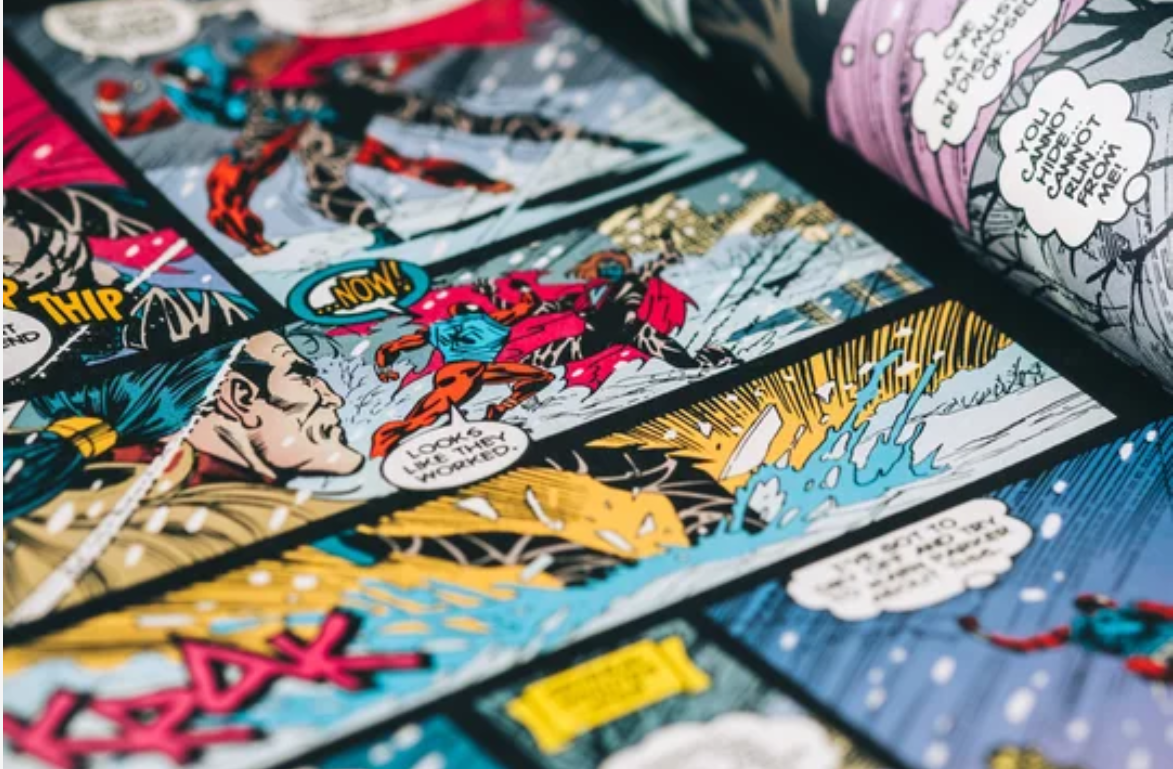Graphic novels have become increasingly popular in the last few years, with one of the key reasons for its growing reader base being the fact that you get pictures and text together, and in an entirely new manner!
It’s like reading a book… but also a little like watching a movie – it draws you in so much deeper than you could even imagine.
Whether you have just discovered the art of Graphic Novels or have been involved with it for quite some time, it is always interesting to know how these storytelling books operate.
In simple words, Graphic novels are books that are illustrated and works that comprise both writing and graphics. They are clearly not as short as comic books since they hold a complete story and are oftentimes longer in size and greater in text.
This makes only the content of the books relatively easy to read while the books themselves become more entertaining and easier to swallow. In fact, you could call them “works of art,” melding creativity with writing to give you the best of both worlds.
Of course, that doesn’t mean it’s easy to read them, especially if you’re new. That’s where this guide comes in – here, we’re going to provide you with the knowledge on how to read a graphic novel in the best way.
Read on and learn everything you need to know about graphic novels, from choosing the right one to engaging with the story and appreciating the art. Let’s have fun!
- 100% secure
- 100% secure
- 100% secure
Part 1. Choosing The Right Graphic Novel

The choice of graphic novel is important to ensure the best possible experience during reading. Still, choosing the genre and theme can be a little challenging at first.
Don’t worry, though – to assist you in the process of choosing, we are always here to guide you through this list and explain which graphic novel is the most suitable for you.
1.1 Researching Different Genres And Themes
Graphic novels are present in various categories, just like any other book or movie. Here are some popular genres you can come across:
1.1.1 Superhero
Most of the heroes or antiheroes of graphic novels are people who have powers or abilities beyond ordinary individuals’ measures.
These stories have numerous instances of combat where the forces of light or the protagonists clash with the forces of darkness or the antagonists.
So, if you love raw action, a good dose of conflict, and the problems of right and wrong, you might appreciate superheroes.
Popular graphic novels are Watchmen by Alan Moore and the graphic novel The Dark Knight Returns by Frank Miller.
1.1.2 Fantasy
Magical graphic novels take the reader into a fairy world where the power of speaking creatures and wizards, fights, and quests are presented. They portray themes such as heroism, adventurous actions, and the struggle between the forces of evil and good.
Some examples of widely-liked fantasy graphic novels include Sandman by Neil Gaiman and Bone by Jeff Smith.
1.1.3 Mystery And Thriller
Graphic novels are a good choice for those who like to solve a puzzle and are eager to know what will happen next. Most of the time, these are detective stories, with crimes and things that change back and forth till the end.
Nonetheless, notable mystery graphic novel includes Sin City by Frank Miller and Blacksad by Juan Díaz Canales and Juanjo Guarnido.
1.1.4 Horror
Horror graphic novels are themed to create an element of suspense, fear, and excitement by its aggressors like gloomy environments, the haunt, and creatures.
In some cases, the themes are quite dark and tense, so the subjects often involve fear, the darkness or the unknown, and the horrifying.
If you are a horror fan and various stories and like to have a thrill or goosebumps down your spine, you will surely like graphic novels.
The horror characters in graphic novels are rich and diverse; some terrifying ones are The Walking Dead by Robert Kirkman, Uzumaki by Junji Ito, etc.
1.1.5 Romance
Romance graphic novels deal with issues such as love, affection, and the overall transformation that a main character undergoes emotionally or psychologically.
Reliant on these experiences, these chronicles touch on issues such as relationships, self-development, and the roller coaster of affection.
So, if you love stories that involve emotions and stories drawn around characters, they are the best since there are many romance graphic novels.
Graphic novels with romantic themes are Blankets by Craig Thompson and Seconds by Bryan Lee O’Malley, among others.
1.1.6 Slice Of Life
Social realism graphic novels portray an aspect of real life and realistic characters; a common aspect is that they portray the author’s life and interpersonal relationships.
Such stories often contain real people’s experiences, thereby offering a view of people’s lives.
Marjane Satrapi’s Persepolis and Alison Bechdel’s Fun Home are perfect examples of graphic novels on social realism.
1.2 Personal Interests And Preferences
When choosing a graphic novel, reflect on what you find appealing in other forms of fiction or film genres. Here are some questions to help you narrow down your choices:
- What kind of narratives interest you?
- What kind of books or movies do you prefer?
- Do you have any specific subjects you would like to focus on? Everything can be considered as a subject: Science, history, magic, etc.
- Are you in the mood to laugh or to think about more profound and philosophical things?
Check out several graphic novels and determine which artists you prefer. The style of the art can play a huge role in your enjoyment of the story, so don’t be hesitant to look for what you prefer.
1.3 Recommendations And Reviews
Where you can find a good graphic novel is to ask others; they may recommend what they find pleasing. Here are some ways to find recommendations:
1.3.1 Ask Friends And Family
If you are not a reader of graphic novels, the best thing that you can do for you is to simply get suggestions from a friend who reads them.
Recommendations according to one’s choice are very effective since these are recommendations from friends or people who understand your choice.
1.3.2 Bookstore And Library Staff
The employees in different areas, especially those working in bookstores and libraries, are often quite helpful and can suggest books, including both AC+ graphic ones.
1.3.3 Online Reviews
Other graphical formats, such as graphic novels, have feedback from the users, as well as websites such as Goodreads.
Reading reviews is always helpful, as they allow you to understand what aspects of the story might be appreciated by readers and which ones have flaws that could influence your decision to read them or not.
1.3.4 Award Winners
Search for the books that have received awards, as they often provide quality reading.
Prizes are considered to mark quality, and if you rely on these, it will lead you to some of the best pieces of work in the genre.
Such annual awards as the Eisner Awards and the Harvey Awards are well-known for their recognition of graphic novels.
Another feature that is useful for such a search is checking award winners: this can help you look up the graphic novel that got good reviews and is deserving of an award.
- 100% secure
- 100% secure
- 100% secure
Part 2. Understanding The Visual Language

Graphic novels employ unique characteristics, such as panels, gutters, and speech bubbles. Planes are the separate frames that hold the artwork and the story.
Here, the placement and size of panels can affect the story’s pacing and rhythm. Gutters are areas between panels, which may represent time intervals or the change of viewpoint.
Thoughts and dialogue are in speech bubbles, and the shape and appearance of the bubble can recreate emotions and tones.
Graphic novels rely heavily on visual elements, and objects contain other layers of meaning within them. Make sure to focus on the regular symbols, the facial expressions of characters, and gestures.
These elements can help to better understand the characters’ feelings, topics, and the meaning hidden in the story.
Specifically, color, shading, and art style are part of the various facets of understanding the graphic novel. Colors create the given atmosphere, and shading introduces depth to the artwork.
The variation of the style of art can also influence the perception and interpretation of the story.
Keeping all of these visual elements in mind while reading the graphic novel can maximize your appreciation and comprehension of the complex narratives that make comic books great.
- 100% secure
- 100% secure
- 100% secure
Part 3. Engaging With The Story And Characters

When learning how to read a graphic novel, you also need to understand the style, especially in terms of engagement with the elements of the story, like the characters. Graphic novels can sometimes have unconventional plot patterns that differ from prose.
Nonlinear narratives, multiple points of view, and complex plots are some of the possibilities. The protagonist's creation is essential in any story, and this also applies to graphic novels.
Pay close attention to character changes in the plot, including their spoken and unspoken words and actions.
These aspects provide the audience with insight into their motives, struggles, and progress, thus enriching the general plot line.
Both dialogue and interior monologues are important for expressing the characters’ thoughts and feelings. Hone speech bubbles may vary in form to show whether the text is dialogue, thoughts, or narration.
Studying these elements can help to gain more insights into the characters’ nature and their interactions.
By analyzing the elements of the plot, characters, dialogue, and inner thinking, one can discover the valuable tools of graphic novel storytelling.
This approach will make your reading, as well as identification with characters in the story, more meaningful, giving you a deeper understanding of the story and drawing you further into the lives of these characters even beyond what you see.
- 100% secure
- 100% secure
- 100% secure
Part 4. Appreciating The Artistic Elements

The artwork in graphic novels is as important as the text itself. Spend a few minutes and analyze the pictures carefully, their features, and their role in presenting the story.
For instance, line work, composition, and metaphors are used by artists to help complement the story and create an emotional response in the viewers.
To enhance the themes, artists employ variance in angles, framing, and layout to increase the learning experience.
It also helps to fully appreciate the techniques used to create such visually rich content by becoming more familiar with them.
In a graphic novel, art plays a crucial role in the book’s experience. It has the ability to make the mood, extend meanings beyond what the text embodies, and add realism to the story, which cannot be done through writing alone.
Realizing the effects of art will make you better appreciate the storytelling and, therefore, the graphic novel in its general context.
Understanding the artistry, right from the drawing to practical conventions of perspective and even composition, gives the viewer deeper insights into how the pictures and the story actually complement each other.
It adds depth to your interaction with graphic novels due to the method chosen to examine the literary works.
- 100% secure
- 100% secure
- 100% secure
Part 5. The Role Of AfirstsoftPDF
Afirstsoft PDF is a multipurpose tool that has an essential role in converting different file types into PDFs.
It helps organize and share documents since it allows for easy conversion of files like Word, Excel, and PowerPoint to PDF.
This conversion not only retains the formatting of the document but also improves accessibility and file sharing.
Additionally, AfirstsoftPDF is easy to understand and navigate; users can convert documents in a few simple steps, which makes this service more efficient and time-saving for both individuals and companies.
So, if you need to turn documents into PDFs, AfirstsoftPDF is a tool you should try. It’s fast, easy, and keeps your files safe. It’s perfect for both personal use and for businesses.
Since graphic novels tend to work great in PDF formats, you can always use this tool to enhance your experience with the novel, especially as you can use the “Read” mode to view it, using it purely as a reader, too!
Part 6. Conclusion
Thus, graphic novels are an exciting and informative genre since they combine both the visual experience and language.
When readers know about the visual language, the story and characters, and the artistry behind the piece, they can enjoy this multi-faceted form of narration.
As a beginner or a regular reader of graphic novels, there is always something else that you can learn.
Try out the various categories, try new paintings, and ask people for suggestions on reading new material. There is a great variety of graphic novels out there, and people can spend hours reading them.
Graphic novels are unique since they incorporate graphic and literary items in a coherent and engaging manner.
By incorporating this information, you can easily learn how to read graphic novels. Read your favorite one today, and let us know if these tips helped you out. Have fun!
- 100% secure
- 100% secure
- 100% secure

John Smith
Editor-in-Chief
With 10 years of experience in the office industry, John Smith is a tech enthusiast and seasoned copywriter. He likes sharing insightful product reviews, comparisons, and etc.
View all Articles >



